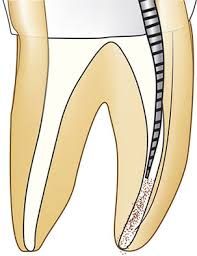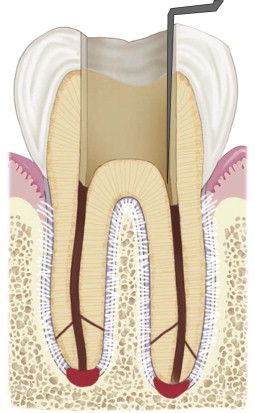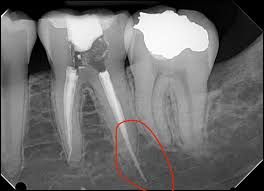Hi everyone, on this very post we would be discussing the operative procedure aspect of preventing procedural accident during endodontic treatment. Although endodontic accident occurs during treatment, it can also be minimised by careful utilisation of dental materials and instruments if handled properly.
"Examples of procedural accidents include swallowed or aspirated endodontic instruments, crown or root perforation, ledge formation, separated instruments, underfilled or overfilled canals, and vertically fractured roots."Source
Now let's discuss on each of the procedural prevention from the operators end.
1- Employing rubber dams during root canal treatment is usually encouraged. However in certain cases such as misaligned cast crowns, misoriented castings or calcified pulp chambers in which pulp chamber might be difficult to locate, rubber dams usage could be skipped for easy alignment between the crown and the root
2- Secondly, after the penetration of the chamber roof using a "safe-ended" access bur such as "pulp shaper" or "Endo-Z-bur" type as that will prevent the perforation of the pulp chamber floor.
3- The use of apex locators especially electronic type and angled radiographs help in early perforation detection. Early perforation detection on its own would assist in minimizing the damages caused by continued assess cavity preparation, cleaning and irrigation on a perforated tooth which will eventually worsened the prognosis and treatment especially the non-surgical options.
4- "Split dam" is a dental appliance that can be used to isolate and visualise the crown root alignment.
5- Use of fiberoptic light might assist in locating canals during treatment and likewise magnifying glasses and electronic or operative microscope can assist in locating small orifices.
Early Recognition of Perforation
Punching or perforating into periodontal ligament area and bone is usually but not compulsorily accompanied by sudden pain and continuous bleeding. This bleeding area might be difficult to dry up and inserting paper points or cotton pellet for gauging the haemorrhage might result into renewed or increased bleeding.
Perforations has good prognosis when detected earlier in order to prevent further damage by the use of intra-canal medicaments, instruments and irrigants.
Early Signs of Perforation may include any of the following clinical conditions;
1- Sudden pain and discomfort during the working length determination when the local anaesthesia administered was profound at the onset of the preparation.
2- Burning pain or a strange mouth taste during irrigation with sodium hypochlorite solution.
3- Sudden appearance and flow of haemorrhage.
4- Radiographs can also be used in assessing perforations such as displaced files in the root canals or malpositioned files or obturators or even from the apex locators when the measurement is far short of the working length from initial file entry.
That's all as regards this notes on procedural mishaps and errors, more would presented in further lectures on subsequent posts. Thanks for following up the post up to this juncture and happy blogging.
Happy Blogging and Blurting 🌴🌴🌴🌴🌴🦷🦷🦷🌴🌴🌴
Video from Mental Dental YouTuber



